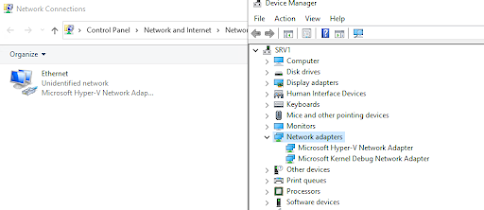I love Hyper-V inside Windows 11 (and inside Windows 8.x and 10 in their day). An utterly simple hypervisor (to use) but one that provides a lot of benefits. I have written 4, and shortly 5, books that made use of this feature. I have created a nice server farm (2 forests, 3 domains, multiple servers, etc) which runs nicely on my boxes. The scripts to create the VMs, and configure them are all published to GitHub,.
Now to run a VM at a reasonable speed, you need to give the VM resources. My old Precision T7500 did not and could not support the hardware necessary for Win 11. I now have a Precision T7920 with 2 16-core Xeon Gold processors, 128 GB of ram, 1 TB of Nvme SSD, 2x2TB plus 1x1TB SSDs. So a LOT of storage, a LOT of memory, and a lot OF CPU. My farm works great. Except when it doesn't.
I run this box as part of the Windows Insider's program. That means I get a more-or-less weekly upgrade that brings new features and bug fixes. It is a lot of fun - except sometimes the upgrade does NOT work. Over the years I have had numerous issues with an upgrade and have generally been able to back up to an earlier build or take a newer build (with a fix). For the most part this has been an inconvenience to me, but useful for the program for a while - I just love providing feedback.
One specific set of issues caused by an updated Insider build is that Hyper-V does not work. This has happened now around 5 times over the years. NOTE: This was originally written in 2002. Since this blog post was first published, this issue has affected nearly every Windows Insider update I have taken since.
Backing up to an earlier build sometimes cures the problems. But all to often, I just could not get things going again. This happend again a few days ago - and this blog post notes some of the issues and some troubleshooting tips (at that time).
So after an upgrade, starting the Hyper-V MMC showed something like this:
Troubleshooting tip #5
If you enable hidden devices inside Device Manager you can see the "removed" net adapters.
In Device Manager, click on View, then select Show Hidden Devices then you see:
You can then right-click each adapter and uninstall the device. If you then click Action, and then click Scan for hardware changes - you should see just the actual vNICs in your VM.
Troubleshooting tip #6
If you add a 'new' nic to a VM, Windows sees it as a brand new NIC, so sets the device to get its configuration from DHCP.
This might be fine if the host was DHCP configured but not if you configured it with static IP addresses (eg for a DC or a DNS server). Fortunately, you have PowerShell and can easily script the NIC configuration.
I hope this helps someone!
[note: this issue has been with me for a long while. This post was first written in May 2002, but the underlying issue has been consistent since them. I have made some updates (and fixed typos) to this post in May 2023.




No comments:
Post a Comment